Mexican cuisine is known for its wide variety of cheeses, and two popular options that often find themselves in the spotlight are Panela Cheese and Cotija. These cheeses play a significant role in Mexican dishes, adding flavor, texture, and richness to a wide range of recipes.
Panela Cheese, is a semi-firm cheese with a smooth texture and a mild, slightly tangy flavor. It is often compared to fresh mozzarella due to its similar taste and soft, chewy consistency. Panela is commonly used in Mexican cuisine for its versatility. It can be sliced for sandwiches, cubed for salads, or grilled to add a smoky flavor while maintaining its shape.
On the other hand, Cotija Cheese is an aged, hard cheese with a crumbly texture and a bold, salty flavor. It is often referred to as the “Parmesan of Mexico” due to its resemblance to the popular Italian cheese. Cotija is typically used as a topping in Mexican dishes, such as sprinkling it over salads, pasta, grilled corn (elote), or beans. Its distinct flavor enhances the taste of these dishes, adding a savory kick.
Key Takeaways:
Contents
- 1 Panela Cheese Characteristics and Uses
- 2 Cotija Cheese Characteristics and Uses
- 3 Popular Dishes Featuring Panela Cheese
- 4 Popular Dishes Featuring Cotija Cheese
- 5 Choosing Between Panela Cheese and Cotija
- 6 Conclusion
- 7 Find out more about Panela Cheese
- 8 Can You Freeze Panela Cheese? Discover the Facts Here!
- 9 Unveiling the Flavor: What Does Panela Cheese Taste Like?
- 10 Is Panela Cheese Healthy? Unveiling the Nutritional Facts
- 11 Unraveling the Mystery: How Long Does Panela Cheese Last?
- 12 Is Panela Cheese Like Mozzarella? Unveiling the Cheese Facts.
- 13 Mexican frying cheese
- 14 Does panela cheese melt
- 15 Glossary of Cheese Terms
- 16 Feria del Queso Tonantzintla 2022
- 17 8th Annual Festival del Queso Artesanal
- 18 The Best Substitute for Panela Cheese – 12 Great Options
- 19 Panela and Spinach soup
- 20 Panela vs Paneer
- 21 FAQ
- 21.1 Q: What is the difference between Panela Cheese and Cotija?
- 21.2 Q: How can I use Panela Cheese?
- 21.3 Q: What are the characteristics of Cotija Cheese?
- 21.4 Q: Can I substitute Panela Cheese for Cotija in recipes?
- 21.5 Q: What are some popular dishes featuring Panela Cheese?
- 21.6 Q: What are some popular dishes featuring Cotija Cheese?
- 21.7 Q: How do Panela Cheese and Cotija differ in texture and flavor?
- 21.8 Q: How do I choose between Panela Cheese and Cotija?
- 21.9 Q: What is the conclusion of the Panela Cheese vs Cotija comparison?
- Panela Cheese is a semi-firm cheese with a mild, tangy flavor, resembling fresh mozzarella.
- Cotija Cheese is an aged, hard cheese with a crumbly texture and a salty flavor, similar to Parmesan.
- Panela Cheese is versatile and can be used in sandwiches, salads, and grilled dishes.
- Cotija Cheese is commonly sprinkled on top of salads, pasta, grilled corn, and beans to add a savory kick.
- Both cheeses have their unique characteristics and play a significant role in Mexican cuisine.
Now that we have uncovered the mysteries behind Panela Cheese and Cotija, we can dive deeper into their individual characteristics and explore the delicious recipes in which they shine. So, let’s continue our cheese journey and discover the wonderful world of Panela Cheese!
Panela Cheese Characteristics and Uses
Panela Cheese is a semi-firm cheese with a taste and texture reminiscent of fresh mozzarella, making it a versatile ingredient in various Mexican dishes. Its smooth and creamy consistency allows it to be sliced for sandwiches or cubed for salads, adding a deliciously mild and slightly tangy flavor to your meals.
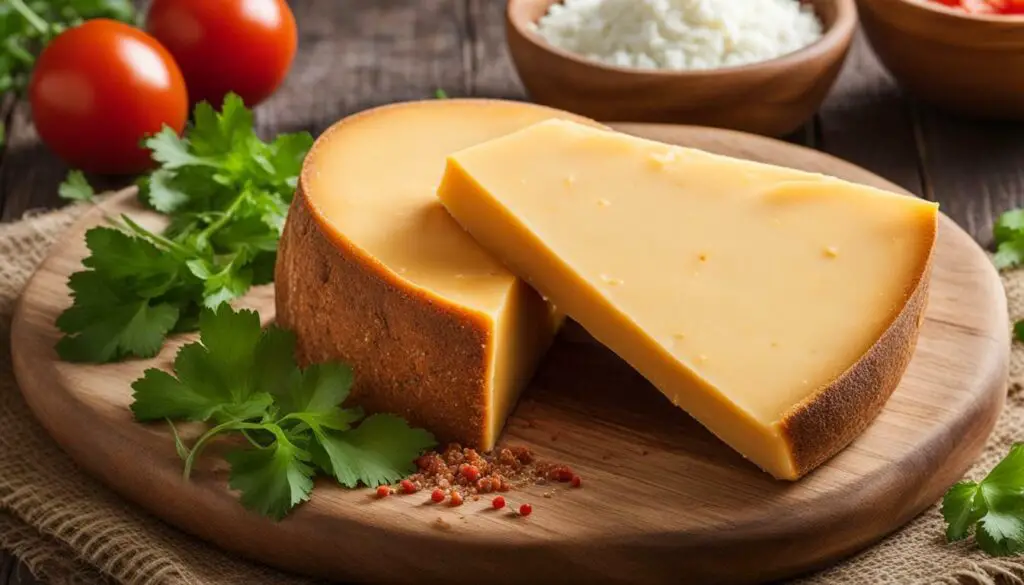
This cheese is particularly popular for grilling as it softens without losing its shape, giving you a delightful meltiness on the outside while retaining a firm and slightly chewy interior. The subtly salty profile of Panela Cheese pairs well with the smoky char that grilling imparts, making it a fantastic addition to dishes like grilled vegetable skewers or stuffed grilled peppers.
Panela Cheese can also be used in a variety of traditional Mexican recipes. It adds a creamy element to classics such as enchiladas, chiles rellenos, and quesadillas. Additionally, this cheese is perfect for salads, as its mild flavor complements a wide array of vegetables, while its firm texture holds up well when tossed with dressings.
Whether you’re looking to add a creamy touch to your sandwiches, enhance the flavors of your salads, or experiment with grilling, Panela Cheese is a versatile cheese that will elevate your Mexican-inspired dishes to new heights of deliciousness.
Cotija Cheese Characteristics and Uses
Cotija Cheese is an aged, hard cheese with a dry, crumbly texture and a bold, salty flavor, adding a delightful twist to a variety of Mexican dishes. It is often referred to as the “Parmesan of Mexico” due to its similarities in flavor and usage. The cheese gets its name from the town of Cotija in Michoacán, where it originated.
One of the key characteristics of Cotija Cheese is its crumbly texture, which makes it perfect for grating or crumbling over dishes. Its intense flavor elevates the taste of various Mexican recipes, providing a rich and savory experience. Whether used as a topping on salads, pasta, or grilled corn, Cotija Cheese adds a distinctive and satisfying element to every bite.
One popular dish that utilizes Cotija Cheese is elote, also known as Mexican street corn. The cheese is traditionally sprinkled over grilled corn on the cob, along with mayonnaise, chili powder, lime juice, and cilantro, creating a harmonious blend of flavors. Cotija Cheese is also commonly used in Mexican bean dishes, enchiladas, and quesadillas, enhancing their taste and adding a touch of authenticity.
Discover the Versatility of Cotija Cheese
- Grate Cotija Cheese over salads for an extra burst of flavor and texture.
- Sprinkle it on top of your favorite Mexican soups or stews for a delicious finishing touch.
- Use it as a filling for stuffed peppers or tamales, adding a savory element to the dish.
- Crumble Cotija Cheese over roasted vegetables or grilled meats for a delightful contrast of flavors.
“Cotija Cheese adds a distinctive and savory element to Mexican-inspired dishes, elevating their taste and providing a burst of flavor. Its crumbly texture and bold flavor make it a versatile ingredient that enhances a variety of recipes.” – Chef Maria Sanchez
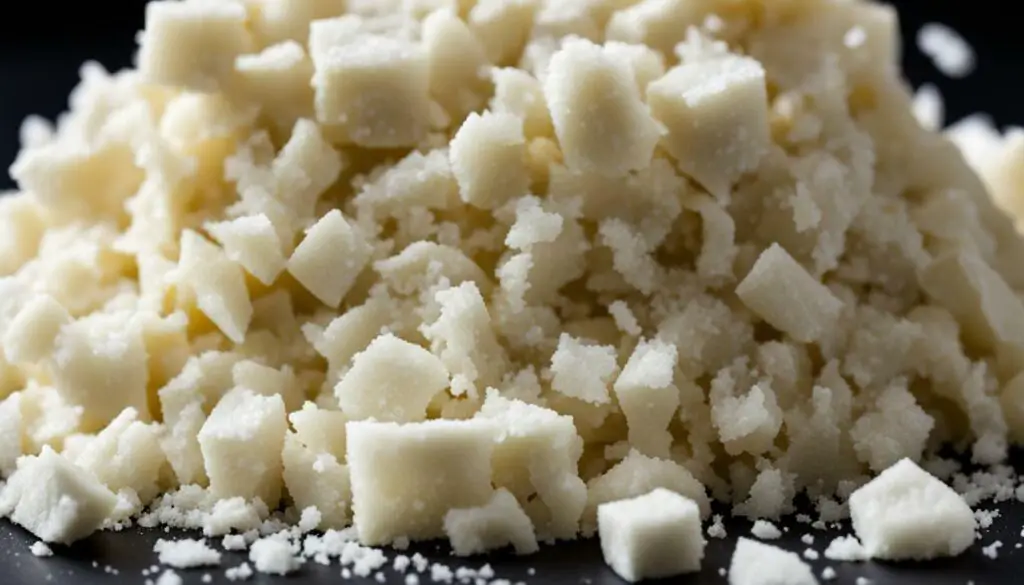
While Panela Cheese boasts a semi-firm texture and a mild, creamy flavor, Cotija Cheese offers a dry, crumbly texture with a sharp, salty taste, making them distinctive options for different culinary needs. Panela Cheese is known for its smooth and velvety consistency, similar to fresh mozzarella. Its mild flavor allows it to complement a wide range of dishes, from sandwiches to salads. When grilled, Panela Cheese retains its shape and develops a subtle smoky flavor, adding depth to any dish.
Cotija Cheese, on the other hand, is aged and has a firm texture that crumbles easily. Its intense and tangy flavor is reminiscent of parmesan, making it a popular choice for adding a punch of saltiness to Mexican cuisine. Whether it’s sprinkled on salads, pasta, grilled corn, or beans, Cotija Cheese brings a bold and distinct taste that elevates the overall flavor profile of a dish. Its crumbly nature creates a delightful contrast in texture, adding a satisfying crunch to every bite.
When comparing Panela Cheese and Cotija, it’s essential to consider their unique qualities and how they can enhance different recipes. While Panela Cheese lends itself well to dishes that require a creamy and meltable texture, Cotija Cheese shines in recipes that call for a stronger and saltier presence. Understanding these differences will help you choose the right cheese to elevate your Mexican-inspired creations.
Panela Cheese vs Cotija: Texture and Flavor Comparison
- Panela Cheese has a semi-firm texture, while Cotija Cheese has a dry, crumbly texture.
- Panela Cheese has a mild, creamy flavor, while Cotija Cheese offers a sharp, salty taste.
- Panela Cheese is versatile and can be sliced for sandwiches, cubed for salads, or grilled without losing its shape. Cotija Cheese is commonly sprinkled on various dishes, including salads, pasta, grilled corn, and beans, adding a flavorful and crunchy element.
- Both cheeses have their unique characteristics and uses in Mexican cuisine, allowing you to experiment and explore the diverse flavors they bring to your dishes.
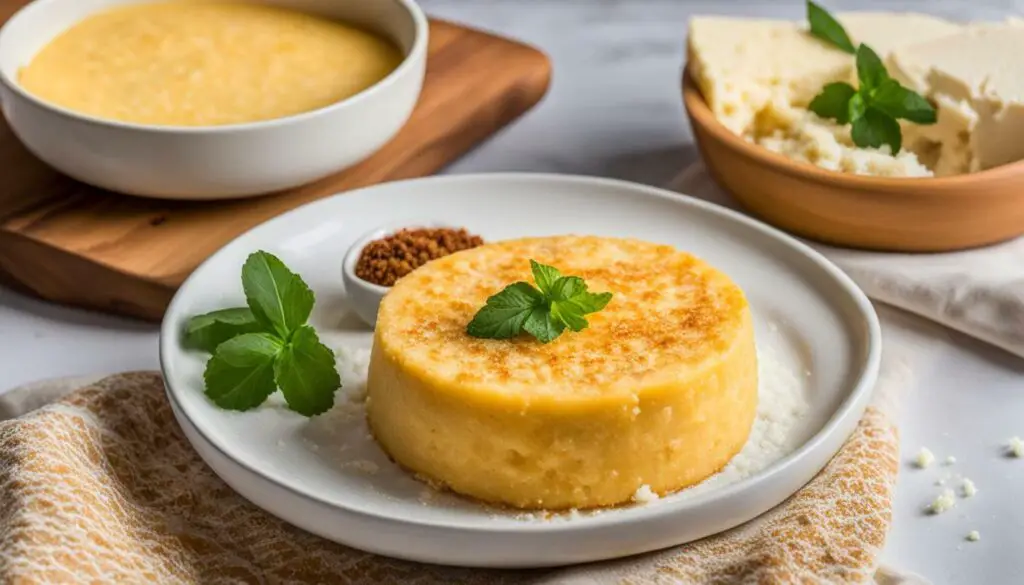
Whether you prefer the creamy mildness of Panela Cheese or the bold saltiness of Cotija Cheese, each option brings a distinct taste and texture to your Mexican recipes. Try them both and discover the endless possibilities they offer in creating flavorful and satisfying dishes.
Popular Dishes Featuring Panela Cheese
Panela Cheese shines in a variety of dishes, including traditional Mexican sandwiches, refreshing salads, and even as a grilled delight that maintains its shape. This versatile cheese adds a creamy and mildly tangy flavor to your favorite dishes, making it a perfect choice for both simple and elaborate meals.
One popular dish that showcases the versatility of Panela Cheese is the classic Mexican torta. Layered with sliced avocado, tomatoes, onions, and cilantro, this sandwich becomes a flavor explosion when combined with the creamy texture of Panela Cheese. Another delicious option is a refreshing salad with mixed greens, grilled vegetables, and a sprinkle of crumbled Panela Cheese on top. The cheese adds a delightful creaminess and a hint of saltiness, balancing out the flavors of the fresh ingredients.
For a unique twist, try grilling Panela Cheese. Its high melting point allows it to hold its shape while acquiring a delicious smoky flavor. Simply slice the cheese, brush it with olive oil, and grill until lightly browned and slightly softened. Serve it as a standalone appetizer or add it to your favorite Mexican dishes for an extra touch of richness.
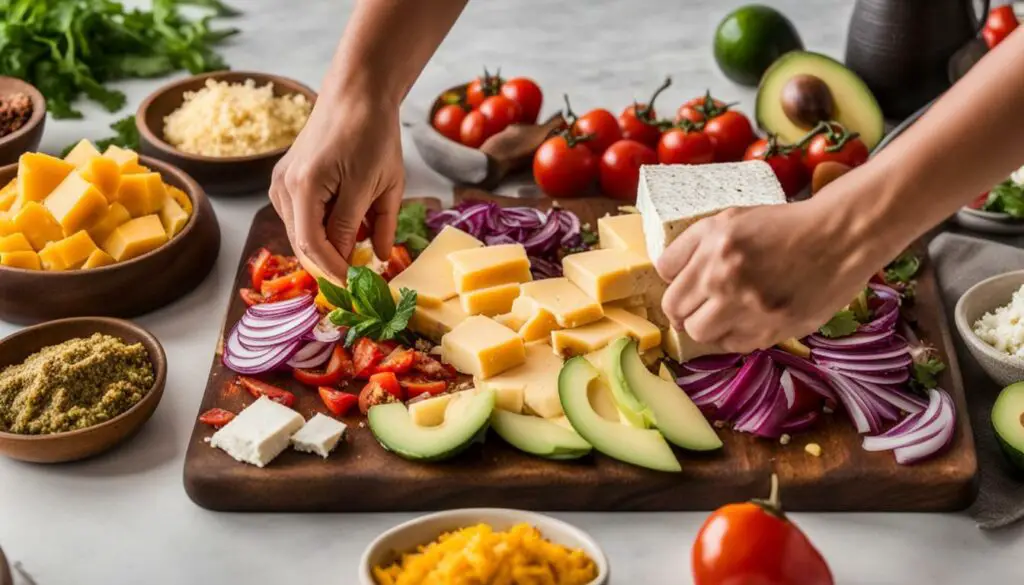
- Preheat the grill to medium heat.
- Cut a small slit lengthwise in each pepper and remove the seeds.
- Stuff each pepper with a slice of Panela Cheese.
- Brush the peppers with olive oil and sprinkle with salt and pepper.
- Grill the peppers for about 5-7 minutes on each side, until the cheese is melted and the peppers are slightly charred.
- Remove from the grill and serve hot as a flavorful appetizer or as a side dish to complement your main course.
Whether you’re looking to add a creamy touch to your salads, elevate your sandwiches, or explore the deliciousness of grilled cheese, Panela Cheese is a versatile option that will never disappoint. Its mild flavor and texture perfectly complement a wide range of dishes, making it a cheese worth including in your culinary repertoire.
Popular Dishes Featuring Cotija Cheese
Cotija Cheese is a must-have in Mexican cuisine, often used to enhance the flavors of dishes like elote (grilled corn), refried beans, and pasta. Its crumbly texture and sharp, salty flavor bring a delightful contrast to these traditional Mexican dishes. Whether you’re grilling corn on the cob or preparing a comforting bowl of pasta, Cotija Cheese adds a distinctive touch that elevates the overall taste.
One popular dish that showcases the versatility of Cotija Cheese is elote, a beloved street food in Mexico. Grilled corn on the cob is slathered with mayonnaise, sprinkled with Cotija Cheese, and lightly dusted with chili powder or paprika. This combination creates a savory, tangy, and slightly spicy flavor profile that is simply irresistible.
“The salty and crumbly texture of Cotija Cheese adds a delightful contrast to the creamy and sweet grilled corn.”
In addition to elote, Cotija Cheese is also commonly used in refried beans, adding a touch of saltiness and richness to this classic Mexican side dish. When topped with a sprinkle of Cotija Cheese, refried beans become even more flavorful and satisfying.
Furthermore, Cotija Cheese is a fantastic addition to pasta dishes. Its robust flavor pairs well with tomato-based sauces and adds a unique depth of taste to a simple pasta bowl. Try crumbling Cotija Cheese on top of your favorite pasta recipes, such as penne arrabbiata or spaghetti aglio e olio, for an extra burst of flavor.
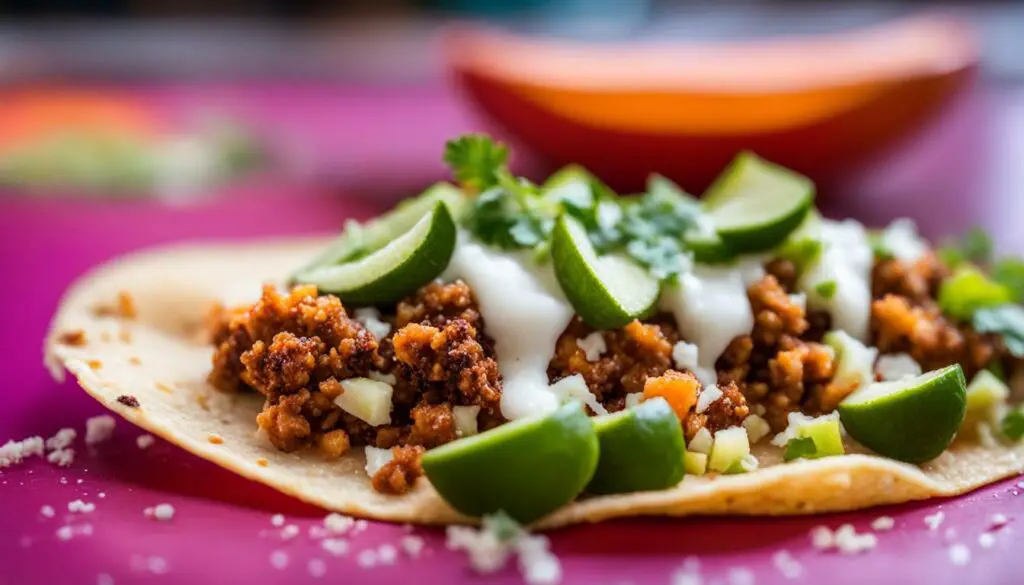
In summary, Cotija Cheese is a versatile ingredient that enhances the flavors of popular Mexican dishes like elote, refried beans, and pasta. Its crumbly texture and sharp, salty flavor make it a standout cheese in Mexican cuisine. Whether you’re indulging in the tangy elote, savoring the rich refried beans, or enjoying a flavorful pasta dish, Cotija Cheese is sure to elevate your culinary experience.
Choosing Between Panela Cheese and Cotija
With an understanding of the individual qualities and uses of Panela Cheese and Cotija, you can make an informed decision on which cheese to include in your Mexican-inspired dishes.
Panela Cheese, with its semi-firm texture and mild taste similar to fresh mozzarella, is a versatile option. It can be sliced for sandwiches, cubed for salads, or even grilled while maintaining its shape. The creamy yet slightly crumbly texture adds a delightful richness to any dish.
On the other hand, Cotija Cheese brings a unique punch to your culinary creations. This aged, hard cheese has a dry, crumbly texture that adds a satisfying crunch. Its sharp, salty flavor, reminiscent of parmesan, enhances the taste of various dishes. Sprinkle Cotija Cheese on salads, pasta, grilled corn, or beans for an extra burst of flavor.
Whether you’re looking for a cheese that melts beautifully or a cheese that adds a bold, tangy kick to your meals, both Panela Cheese and Cotija have their distinct roles in Mexican cuisine. Consider the specific characteristics and uses of each cheese, and let your taste buds guide you in choosing the perfect cheese for your next Mexican-inspired dish.
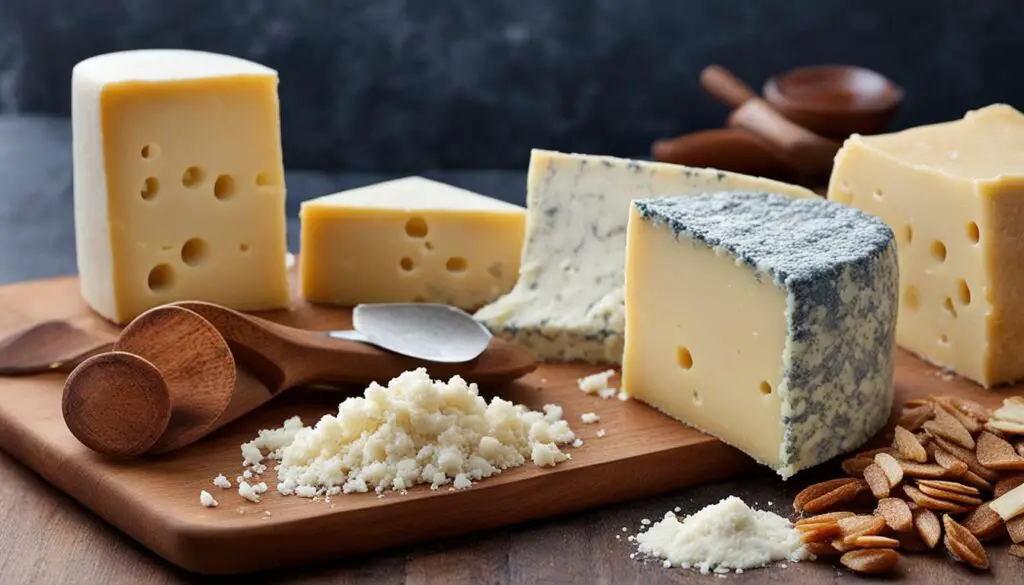
Conclusion
Panela Cheese and Cotija each offer distinct flavors and textures that can transform your Mexican dishes, allowing you to create culinary masterpieces with a touch of authentic Mexican cheese.
Panela cheese, with its semi-firm texture and mild, creamy taste, is perfect for slicing in sandwiches or cubing for salads. It can even be grilled without losing its shape, adding a delightful smoky flavor to your dishes. Whether you’re making a refreshing salad or a hearty sandwich, Panela Cheese is a versatile option that brings a touch of freshness to any recipe.
On the other hand, Cotija cheese, known for its hard, crumbly texture and intense, salty flavor, adds a robust punch to your Mexican dishes. Sprinkle it on salads, pasta, or beans, and you’ll enjoy the delightful contrast it brings. Cotija Cheese is a staple in Mexican cuisine and enhances the taste of grilled corn, giving it a uniquely satisfying umami kick that is hard to resist.
So, whether you’re looking for a mild and creamy addition or a bold and salty flavor, Panela Cheese and Cotija have you covered. Add a sprinkle of Cotija for an extra zing, or let the creamy texture of Panela Cheese bring a touch of indulgence to your dishes. These two Mexican cheeses offer endless possibilities and a world of flavor for your culinary creations.
Find out more about Panela Cheese
FAQ
Q: What is the difference between Panela Cheese and Cotija?
A: Panela cheese is a semi-firm cheese with a taste and texture similar to fresh mozzarella, while Cotija cheese is an aged, hard cheese with a dry, crumbly texture and a sharp, salty flavor.
Q: How can I use Panela Cheese?
A: Panela cheese can be sliced for sandwiches, cubed for salads, or grilled while maintaining its shape. It is a versatile cheese that adds a mild, creamy taste to a variety of dishes.
Q: What are the characteristics of Cotija Cheese?
A: Cotija cheese has a crumbly texture, similar to that of parmesan, and a sharp, salty flavor. It is often sprinkled on salads, pasta, grilled corn, and beans to add a rich and savory taste.
Q: Can I substitute Panela Cheese for Cotija in recipes?
A: While both cheeses have their unique flavors, Panela cheese is milder and creamier compared to the sharp and salty taste of Cotija. Depending on the recipe, you may be able to substitute one for the other, but there will be a difference in flavor.
Q: What are some popular dishes featuring Panela Cheese?
A: Panela cheese is commonly used in Mexican cuisine in dishes such as quesadillas, enchiladas, and tacos. It can also be grilled and served as a standalone appetizer or added to fresh salads.
Q: What are some popular dishes featuring Cotija Cheese?
A: Cotija cheese is often crumbled on top of Mexican street corn, known as elote, to add a tangy and salty kick. It is also used in dishes like chiles rellenos, tostadas, and Mexican rice to enhance their flavor.
Q: How do Panela Cheese and Cotija differ in texture and flavor?
A: Panela cheese has a semi-firm texture similar to fresh mozzarella and a mild, creamy flavor. Cotija cheese, on the other hand, has a hard and crumbly texture, like parmesan, and a sharp, salty flavor.
Q: How do I choose between Panela Cheese and Cotija?
A: The choice between Panela Cheese and Cotija depends on the desired flavor and texture for your recipe. Panela cheese works well when you want a milder and creamier taste, while Cotija adds a sharp and salty kick.
Q: What is the conclusion of the Panela Cheese vs Cotija comparison?
A: Panela Cheese and Cotija are two distinct Mexican cheeses with their unique characteristics and uses. Panela cheese is semi-firm with a milder flavor, while Cotija is hard and crumbly with a sharp and salty taste. Choosing between the two depends on the desired texture and flavor for your recipe.
